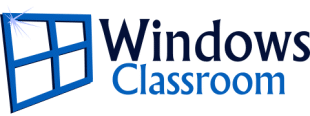Why Your Document Tracking Needs DRM
Merely creating documents and saving them as PDF files before publishing is not enough. Even if you password-protect your PDF file, you can be sure that a simple application found online will crack the password and break into your PDF files without your knowledge. Hence, whether you’re working in an organization or as an individual, you need to maintain the integrity of your document by ensuring it is used ad you intended.
There are several ways to maintain control over your documents or PDF files. Several data security solutions offer data security to protect your documents. However, very few show you how your documents are being used once you’ve sent them, but one that does is digital rights management [DRM]. Document tracking is a critical aspect offered by DRM solutions regarding policy and procedure management.
Table of Contents
Understanding document tracking
Document tracking is a feature that tracks how your document’s are being used, by who and from where. With the help of document tracking, you can view how the user is viewing your PDFs, check who is accessing your documents, who is making changes to it and the credentials of the recipient who has received it. However, only DRM offers you complete control over the lifecycle of your document. That includes revoking access if you notice the tracked document has been willfully or accidentally misused.
Document tracking is crucial for classified and sensitive data. It is a commonly used feature employed in a wide range of industries and companies, including finance, healthcare, legal, publishing and more, given the sensitive nature of their content. Several documents in these industries contain sensitive and classified data that must be tracked at every stage of its lifecycle.
Why your document tracking needs DRM
Even though several document tracking applications are available, DRM is the only proven solution that gives you holistic administration and controls when tracking your data. Let’s look at some of the important reasons DRM is useful when tracking your documents.
-
Audit trails
The relevance of audit trails cannot be overemphasized. For instance, whenever there is an issue, the first step to be taken is to audit the problem. Without document tracking, there can be no audit trails. Commonly used software applications have basic document tracking features which can be easily bypassed, manipulated and altered to prevent the document from being tracked. DRM systems go beyond monitoring changes to your protected documents. It maintains a record of every user that has accessed the document with the timestamp, thus ensuring easy and effective audit trails. With the right DRM system, you can access the complete audit trail in just a few clicks. For example, if an unintended user attempts to access your document, you will be immediately notified, thus showing up in the audit trail. Furthermore, if a user is attempting to share the paper without your knowledge, the same information will be logged into the system. These features are particularly crucial for managing policies and procedures, which you can only obtain through the right DRM solution.
-
Control document sharing
Document tracking allows you to control which document can be shared and by whom. For instance, your organization may have several policies and procedures of a sensitive nature. If these are breached, they may cause a colossal PR issue. Having the right DRM system in place ensures that your documents are only shared with intended and authorized users. In addition, DRM allows you to see the complete list of people you wish to access your documents to analyze and find out how they are viewing your data.
-
Effortless collaboration
When sharing documents between different departments, it requires seamless and effortless collaboration. That means several teams may need to work on the same document. If there is no document tracking feature, it can get very confusing. Besides, it can be particularly hard to understand which individual made what change and applied these changes. With DRM, you can easily track which individual has made changes, provided you have given access to make the changes.
-
Tracking progress
If the PDF file has been sent to an authorized user to review, you do not need to inquire if the review has been completed. With document tracking, you can easily view the progress made in the documents in real-time. For instance, you will be notified if the file has been opened and when. If you do not receive any notification that the file has not been opened for review, you can contact and remind them about the pending work.
You might also like: How to remove watermark from PDF
Conclusion
DRM-based tracking allows you to track the activities of your document without making it intrusive for your recipient. DRM controls do not require a heavy backend administration system to gather permissions from your recipients. At the same time, you can also grant and revoke access, maintain extended logging files whenever needed and provide additional security controls. Furthermore, with DRM, you can track the user’s identity at all times.
Using a premier PDF DRM control system can ensure your PDF files and documents are tracked end to end, provide you with realistic data and avoid giving rise to any complaints on the potential use of personal information. Therefore, it’s imperative to use a reliable DRM system when tracking document usage, which can only be done with PDF DRM technology.
Follow Us On:
